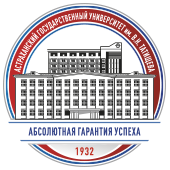Interview with Inventors
Interview with authors of the project “Technique to Test Physiological State of Sturgeon Fish” – Dr. Adilya Ayupova (PhD in Medicine, Senior Research Officer of the Center for Functional Magnetic Materials of Astrakhan State University, Associate Professor of the Chair of Ecology, Nature & Land Management, & Safe Vital Activities of ASU) and Dr. Svetlana Astafyeva (PhD in Biology, Senior Research Officer of the Sturgeon Breeding Research & Educational Center, Associate Professor of the Chair of Biotechnology, Zoology, & Aquaculture). Their coauthors are Prof. Lidiya Vassilyeva, D.Sc. in Agriculture, Director of the Sturgeon Breeding Center, and Dr. Adelya Yusupova, PhD in Biology, Senior Research Officer of the same Center.
– Please tell us why you started developing this R & D project.
– The sturgeon industry is developing actively nowadays; this industry is crucial for Astrakhan Region, as a large number of fishponds is created every single year. Growing sturgeons is very costly; it requires a lot of efforts, time, and money. Sturgeons mature only by the eighth of tenth year of their lives, so their breeders do their best to preserve each and every fish. Owners of fishponds (there are about 40 ponds in our Region now) are highly interested in monitoring their sturgeons’ physiological state at all the stages of their breeding.
– How did you collect your research material?
– The Sturgeon Breeding Research & Educational Center did that jointly with the Center for Functional Magnetic Materials, one of whose top-priority fields of activities is a structural characteristic of biological fluids as an indicator of living systems’ well-being to determine their resistance to unfavorable ecological factors. To identify that indicator, we applied both the conventional blood examination methods (biochemical and hematological ones) and the methods of structural analysis of sturgeons’ biological fluids (serum, mucus). To obtain biological material, we went to fishponds in different periods, which were critical or uncritical for the fish: at the end of their winter hibernation; in midsummer (when the heat peaked); in autumn, when the fish are healthy and well-fed and they start their hibernation.
– What was the object of your patenting?
– Once we gained profound experience in this sphere, we decided to test the technologies, which are applied in Medicine to diagnose the human state of health, on sturgeons. One of those technologies is marginal dehydration; it helped us assess the morphological features of sturgeons’ mucus. Some biological fluid is spilt, covered with glass, dried at the room temperature, and examined under a microscope. This technique has many advantages. First, it’s noninvasive, that is, fish is not injured while its material is being collected. Second, it’s easy and cheap in terms of technology; it doesn’t require any reagents and expensive equipment (for example, thermostats); biological material is made up quickly. Third, this is a real high-tech method: we’re now at the initial stage; then we’ll research the structural composition of biological fluids to assess sturgeons’ physiological state in more details. Actually, this method is of physical nature; it’s applied widely in Medicine and Biology; numerous medical and biological technologies are being developed on its base. We’d remark it’s applied to research haematothermal animals, while fish are researched very rarely by applying this method, so its potential has not still been revealed completely.
– What are the prospects of your research?
– The result of our experiments inspired us. We haven’t finished yet; we’re continuing our research in various fields. Indicators of well-being and ill-being of living systems is what we’re looking for. Now we focus on the research aspect of our activities; then we’re planning to create an atlas that would include photos and our descriptions of what’s been observed. That atlas would help fish breeders and other specialists apply this method in their own research by comparing what they see under the microscope and what they already saw in our atlas. That’d mean the start of commercialization of our project.
Interviewed by T.Yu. Gavrilkina (the Web Resources Information Support Directorate of ASU)
Translated by E.I. Glinchevskiy (the Center of Translation Studies & Conference Interpreting “ASTLINK” of ASU)
June 20, 2017




